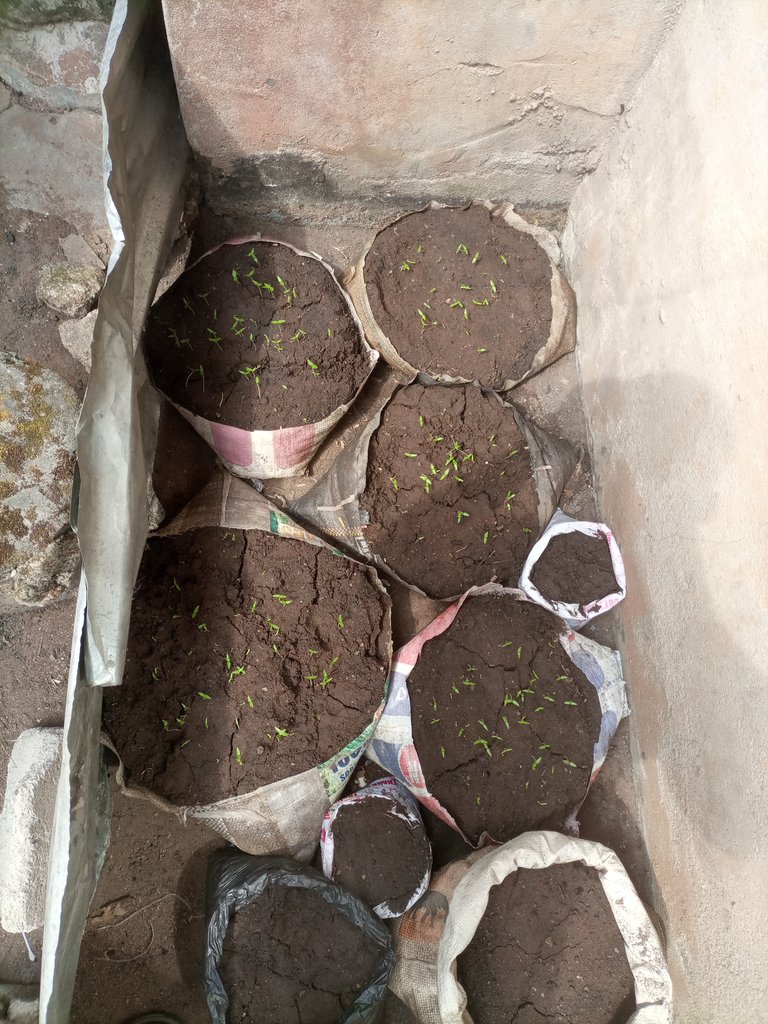A Guide to Nursing and Breeding Peppers: Cultivating Flavorful Harvests
Good evening my great people of hive community, I hope we all had a great day. I am here this evening to share my knowledge and experience on how to Nurse and breed peppers.


Peppers are a versatile and vibrant addition to any garden, offering a spectrum of flavors, colors, and heat levels. Whether you're a seasoned gardener or a beginner, mastering the art of nursing and breeding peppers can elevate your gardening experience. In this guide, we'll explore the essential steps to ensure a successful pepper harvest.
Selecting Pepper Varieties:
Begin by choosing pepper varieties that suit your taste preferences and growing conditions. Consider factors such as heat levels, size, and color. Popular choices include bell peppers, jalapeños, habaneros, and sweet banana peppers.Soil Preparation:
Peppers thrive in well-draining soil with a slightly acidic to neutral pH (6.0-7.0). Amend the soil with organic matter, such as compost, to improve fertility and drainage. Adequate soil preparation lays the foundation for healthy pepper plants.

Germinating Pepper Seeds:
Start pepper seeds indoors 8-10 weeks before the last expected frost date. Use a quality seed-starting mix and provide warmth, moisture, and sufficient light. Once seedlings have developed true leaves, transplant them into larger containers.Transplanting Seedlings:
When outdoor temperatures are consistently above 60°F (15°C), transplant your pepper seedlings into the garden. Space them according to the recommendations for the specific pepper variety to ensure proper air circulation.Watering and Fertilizing:
Peppers prefer consistently moist soil. Water them deeply, allowing the soil to dry slightly between watering. Fertilize with a balanced, water-soluble fertilizer every 2-3 weeks during the growing season, adjusting based on the plant's needs.Pruning and Supporting Plants:
Encourage bushier growth by pinching off the tips of young pepper plants. As the plants grow, provide support with stakes or cages to prevent them from bending under the weight of developing fruits.Pollination:
Pepper plants are self-pollinating, but a gentle shake or brushing with a soft brush can aid in pollination. Bees and other pollinators also play a crucial role, so encourage their presence in your garden.Identifying and Addressing Pests:
Keep an eye out for common pepper pests such as aphids, spider mites, and pepper weevils. Control measures may include insecticidal soap, neem oil, or introducing beneficial insects to the garden.


Harvesting Peppers:
Harvest peppers when they reach the desired size and color. Use clean, sharp scissors or shears to avoid damaging the plant. Regular harvesting promotes continuous fruit production.Saving Seeds:
If you want to breed peppers or grow the same variety next year, save seeds from mature, fully ripe peppers. Dry the seeds thoroughly before storing them in a cool, dark place.
Conclusion:
Nursing and breeding peppers is a rewarding endeavor that can yield a bountiful and flavorful harvest. By following these steps and staying attentive to your pepper plants' needs, you'll be on your way to growing vibrant, healthy peppers in your own backyard. Enjoy the process, experiment with different varieties, and savor the fruits of your labor.
Thanks for stopping by to read my article, I believe you find it so interesting.
@tipu curate
Upvoted 👌 (Mana: 30/60) Liquid rewards.
Thank you so much
Congratulations @amicable1997! You have completed the following achievement on the Hive blockchain And have been rewarded with New badge(s)
Your next target is to reach 2500 upvotes.
You can view your badges on your board and compare yourself to others in the Ranking
If you no longer want to receive notifications, reply to this comment with the word
STOPCheck out our last posts: